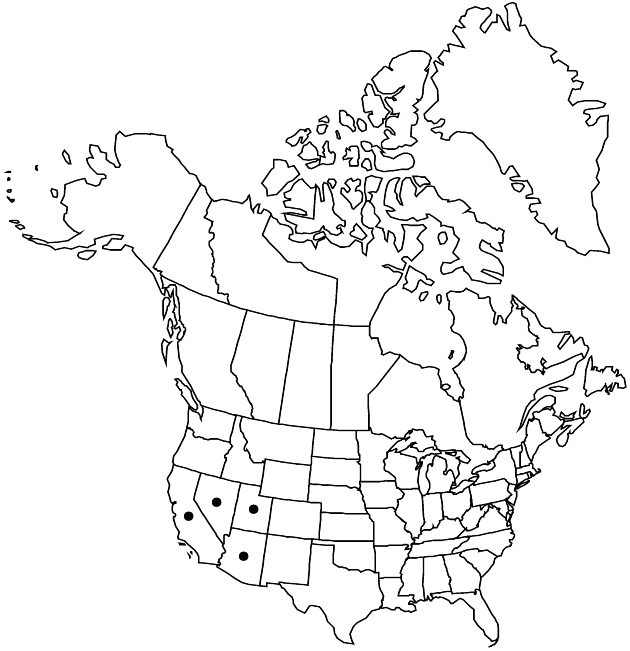Difference between revisions of "Xylorhiza tortifolia var. tortifolia"
Common names: Mojave woody-aster
Treatment appears in FNA Volume 20. Treatment on page 409.
FNA>Volume Importer |
FNA>Volume Importer |
||
| Line 43: | Line 43: | ||
|publication year= | |publication year= | ||
|special status= | |special status= | ||
| − | |source xml=https://jpend@bitbucket.org/aafc-mbb/fna-data-curation.git/src/ | + | |source xml=https://jpend@bitbucket.org/aafc-mbb/fna-data-curation.git/src/f6b125a955440c0872999024f038d74684f65921/coarse_grained_fna_xml/V19-20-21/V20_937.xml |
|tribe=Asteraceae tribe Astereae | |tribe=Asteraceae tribe Astereae | ||
|genus=Xylorhiza | |genus=Xylorhiza | ||
Revision as of 18:45, 24 September 2019
Stems, leaves, and involucres piloso-villous to puberulent, finely stipitate-glandular. Leaf margins piloso-villous. 2n = 12, 24.
Phenology: Flowering Mar–May(–Jun).
Habitat: Sandy or gravelly slopes and flats, often over clay, alkaline, barren areas dominated by creosote bush, sagebrush, shadscale
Elevation: 200–2000 m
Distribution

Ariz., Calif., Nev., Utah.
Discussion
Selected References
None.
Lower Taxa
None.
